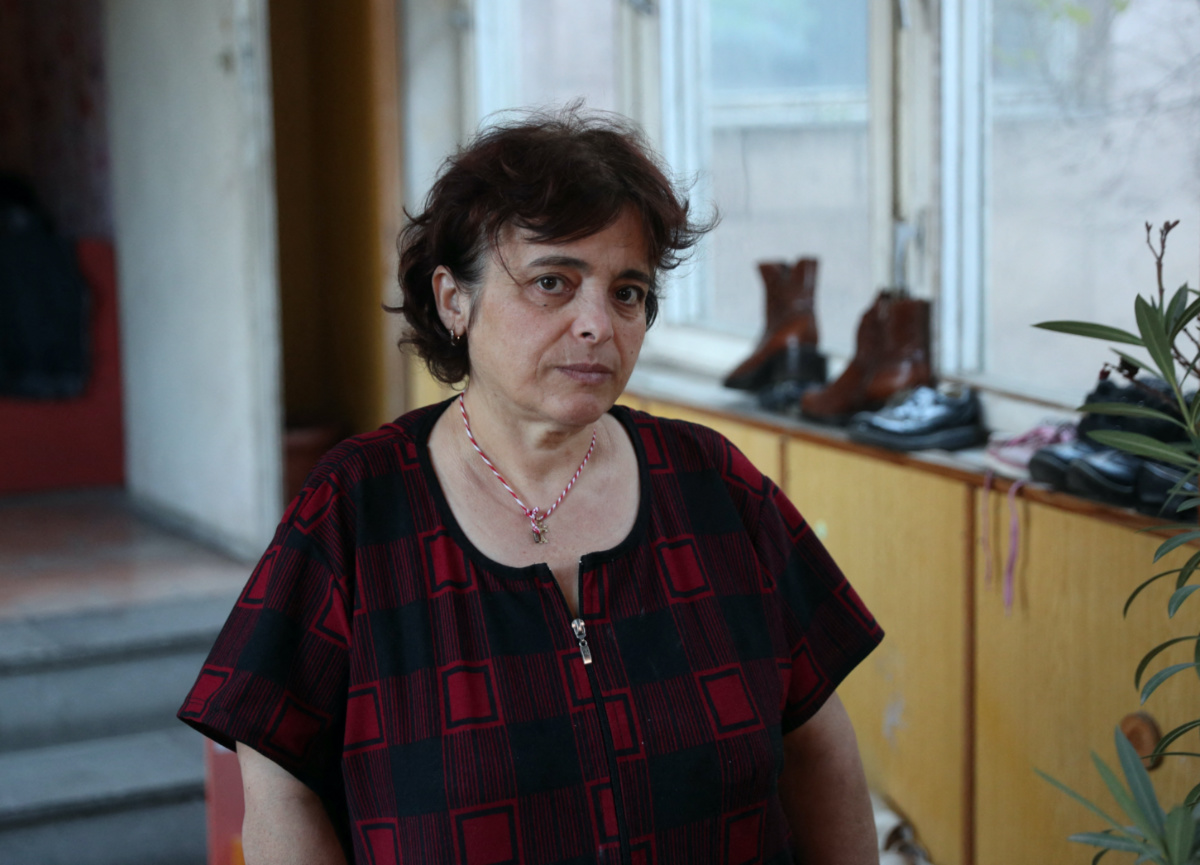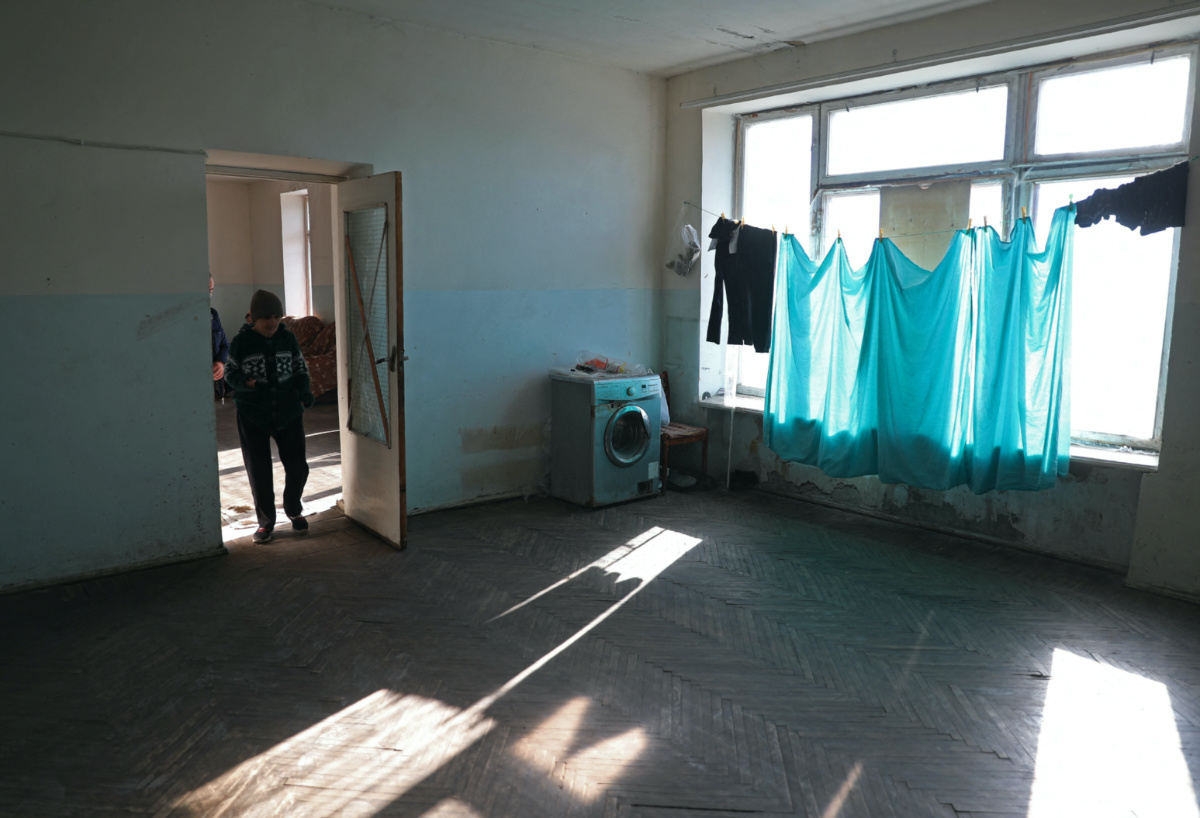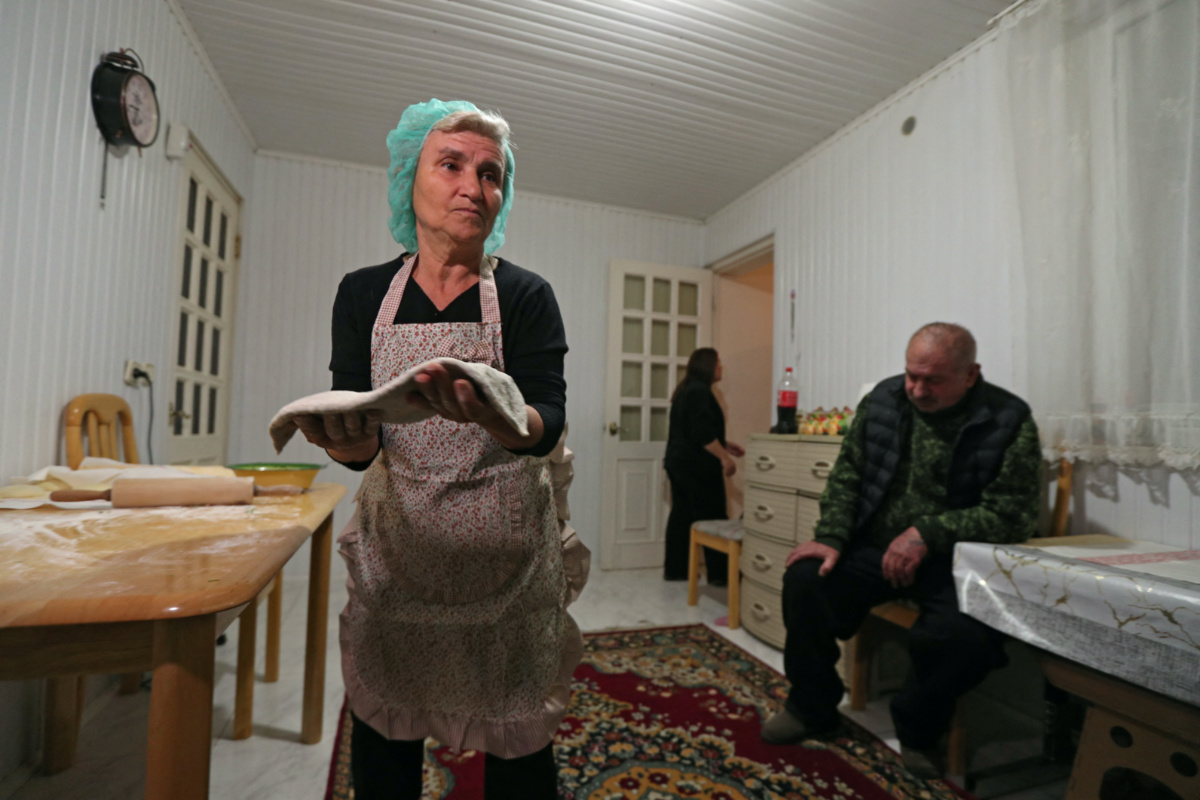Masis, Armenia
Reuters
For the third time in her life, Elada Sargsyan is a refugee.
Born in the Azerbaijani capital Baku, Sargsyan fled her hometown in 1988, aged 19, as the Soviet Union began to fall apart.

Elada Sargsyan, 54, a refugee from Nagorno-Karbakh region, poses for a picture in a disused kindergarten, where she now lives temporarily along with dozens of other refugees from Karabakh, in the town of Masis, Armenia, on 22nd November, 2023. PICTURE: Reuters/Irakli Gedenidze
The city’s once-large Armenian minority were driven out in violence triggered by the outbreak of ethnic conflict in Nagorno-Karabakh, an autonomous, primarily Armenian Christian territory within the mostly Muslim Soviet republic of Azerbaijan, which was soon to become an independent country.
Sargsyan and her family fled to Soviet Armenia, then set up home in the village of Aknaghbyur in Nagorno-Karabakh, known as Agbulaq in Azerbaijani, despite the fact that the mountain region was in Azerbaijan and at war with the government in Baku.
In 2020, they lost another home, when Azerbaijan – by now closely allied with Armenians’ bête noire, Turkey – reconquered much of Karabakh including their village in a second war.
In September 2023, after Azerbaijan retook the remainder of Karabakh in a lightning offensive, prompting an almost total exodus, Sargsyan, by now 54, fled her home for a third time.
She, like the rest of the territory’s 120,000 ethnic Armenians, had suffered a nine-month Azerbaijani blockade of vital supplies from Armenia and refused to believe Baku’s insistence that her rights would be preserved as a citizen of Azerbaijan.
“I’ve already got used to it,” Sargsyan said in the town of Masis, on the outskirts of Armenia’s capital Yerevan, where she now lives temporarily in a disused kindergarten along with 67 other refugees from Karabakh.
“It’s very hard for the people who have fled their homes for the first time. They cry. But even so, they’ll get through it, like we got through it.”
Living in a disused library
Masis, an otherwise sleepy town of 20,000 where Mount Ararat, sacred to Armenians, is clearly visible beyond the closed border with Turkey, has since September hosted around 8,000 refugees from Karabakh.
Until the 1980s, Masis was home to a significant Azerbaijani community, which was forced out in expulsions mirroring those that cost Sargsyan her Baku home. Now, municipal buildings that have been emptied host Armenia’s latest generation of refugees.

Refugees from Nagorno-Karabakh region walk through the disused library where they temporarily live in the town of Masis, Armenia, on 22nd November, 2023. PICTURE: Reuters/Irakli Gedenidze
Many of those now being put up in Masis have nothing, having hurriedly abandoned homes and farms in Karabakh’s outlying villages when Azerbaijan began its final assault on 19th September.
Alina Harutyunyan, 34, fled her village of Harutyunagomer – Qizilqaya in Azerbaijani – with dozens of others in the back of an industrial truck belonging to one of her neighbours. Now she, her husband and four children share one room on the ground floor of a derelict library.
Armenia’s government has provided them with two beds and a one-off 100,000 dram ($US250) payment, but their lodgings have no utilities and are furnished only with child-size tables and chairs, while the cold sweeps into the building through empty doorframes.
“We used to have a television. Now, when the kids want to watch something, we all gather around one phone,” Harutyunyan said.
Though her husband, until September a soldier in Karabakh’s army, is able to earn some money as a labourer in nearby Yerevan, the family remain dependent on the kindness of locals:
“If I could, I’d go back and get all our things. Because here I have to beg for everything.”
We rely on our readers to fund Sight's work - become a financial supporter today!
For more information, head to our Subscriber's page.
Haunted by historic massacres
The memory of mass killings of Armenians by Ottoman Turks during World War I, which all but eliminated Turkey’s Armenian population, is deeply rooted in many Armenians’ folk memory. Many refugees fear they may yet have to move again.
“Turkey is very close to us here in Masis,” said Sargsyan. “Where can we run to next? Where can we go? What can we do? Will this ever end?”
About 150 kilometres to the north, 10 members of the Gasparyan family, who came from Karabakh’s capital, live in a three-bedroom apartment they have rented on the outskirts of Vanadzor, Armenia’s third city.
Like many refugees, they have struggled to find work in Armenia.
Alvina, a grandmother aged 65, has become the family’s main breadwinner, earning a little money selling homemade “jingalov hats” or “green bread”, a flatbread stuffed with herbs that is a staple for Karabakh Armenians.
“Since we don’t have any other income right now, it’s just about enough for bread,” said her daughter-in-law, Narine.

Alvina Gasparyan, 65, a refugee from Nagorno-Karabakh region, makes traditional Zhingyalov hats flatbread to sell and earn money for her family, in the city of Vanadzor, Armenia, on 21st November, 2023. PICTURE: Reuters/Irakli Gedenidze
Charity worker Lila Abrahamyan has taken it upon herself to help some of the 2,600 refugees in Vanadzor.
Each December, she gathers letters from 300 children of poor families asking for Christmas presents, and raises money to buy them gifts. This year, she has received an extra 200 letters from Karabakh refugee children living in Vanadzor.
Instead of toys and sweets, some have asked Abrahamyan for more practical things to replace those their parents had to abandon in September.
“One of them wants winter boots, one of them a coat. Another wants a microwave for their mum,” she said.
“One of them wrote ‘I don’t want anything, I want to go home to Karabakh’. We know we can’t help with that, but we do try to cheer them up.”






